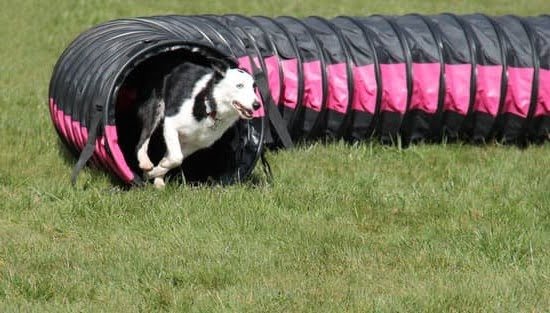Introduction
Yes, dogs can be trained to use a litter box. While this may seem unusual, it is possible with patience, consistency, and time. In fact, not only can you potty train your dog to use a litter box, but you can also train them to do their business in designated areas beyond the litter box. This article will discuss the process of training a dog to use a litter box as well as common concerns people have about this method of potty training. We’ll provide tips and advice on how best to make this transition for your pup so that you both experience success.
The Benefits of Litter Box Training Your Dog
Yes, dogs can be litter box trained in a very similar way to how cats are trained. It requires patience and consistency, but it can be done successfully. The biggest benefit of litter box training your dog is that it helps to keep your house cleaner than how it would be without the training. Not having to constantly worry about accidents on the floor makes cleaning and maintenance easier. Additionally, litter boxes provide dogs with more opportunity for privacy than an exposed potty spot does. This heightened sense of privacy might encourage your pup to go when nature calls as opposed to trying to hold it in or going elsewhere – another advantage you reap from this type of training. Lastly, teaching your dog to use the loo can reduce their stress levels associated with not knowing where or when they should go outdoors to relieve themselves – a great solution for owners with busy lifestyles who cannot guarantee constant availability for their dog’s potting urges!
Necessary Supplies for Litter Box Training
While it may seem strange, it is possible to litter box train your dog! It takes time and effort, but with the right supplies and consistent training, it can be done. First, you need to get a litter box that is big enough for your dog. Make sure it also has sides tall enough that your pup won’t be able to jump out of it. Next, you will need potty pads or puppy pads to line the bottom of the litter box. This will help contain any wet messes and help you clean up easier afterwards. Finally, special non-clumping cat litter should be used in the box; the texture helps them recognize this as a good place for elimination. Be patient and start with short periods of confinement in the room with the litter box and gradually move outwards in increments until you reach your goal. With positive reinforcement and consistency, soon enough you will have a successful litter trained pup!
Preparing Your Home for Litter Box Training
Yes, it is possible to litter box train a dog; however, it requires some preparation on the part of the owner. To begin with, it is important to choose a designated area for your dog’s litter box. It should be in a low-traffic area so that your pup cannot easily soil other parts of your home with its waste. Then, it will be necessary to block off all other areas of the house with baby gates or other barriers. Giving your pup access only to its designated spot will help keep accidents from occurring in other areas and make clean up much simpler.
It is also recommended that you purchase supplies and equipment specifically designed for puppy litter box training. These can include an under-the-bed storage bin to store the litter box, a plastic tarp or pee pad for easy cleanup and disposal, a scoop to collect feces, scented pet-safe detergents for laundering any soiled items, and odor eliminators or air fresheners . Additionally, providing your dog with comfortable bedding such as washable crates or mats will contribute to their potty training success while using their designated area. Establishing clear rules and expectations regarding when and where they are allowed to go potty can also assist in the process of training your furry companion. Finally, positive reinforcement will help reinforce behaviors you would like them to repeat such as going potty outside of their litter box area or telling them “no” when they start sniffing around for an accident-prone spot.
How to Train Your Dog on Proper Litter Box Use
Yes, it is possible for dogs to be litter box trained. Training a dog to use a litter box involves providing the necessary equipment and teaching them the basics of proper toilet habits. To start, you will need to buy a litter box that is specifically designed for dogs or cats and fill it with pet-safe litter. Additionally, it’s important to locate the litter box in a spot that is private and secure.
When first starting out, it’s helpful to encourage your dog to use their litter box by placing treats or toys inside of it. Once they get used to entering the box, you may need to provide verbal guidance and positive reinforcement when they perform properly. For example, provide praise after they complete their business in the box and reward them with their favorite treats if they consistently obey commands while in there. Additionally, instructional training sessions can help teach them how to go from start to finish within the litter box at your command.
Lastly, make sure you clean the litter box after each use; this will prevent accidents from happening around the house and help keep it sanitary for your pup. With consistency and patience, your dog can become a master at using their own personal ‘toilet’!
Adjustments for Different Sized Dogs
Yes, dogs can be litter box trained! The process typically involves making adjustments depending on the size of your dog. For small dogs like Shih Tzus and Maltese, you might need to purchase a smaller litter box with lower sides that they can easily climb over. On the other hand, for larger breeds like Labrador Retrievers and German Shepherds, you require a bigger litter box with raised sides that can prevent them from straining or jumping out of it. In addition, consider getting effective odor control products to minimize any unpleasant odors from their waste in the home. With patience and consistency, your furry friend will soon learn to use the litter box on its own!
Dealing with Unexpected Problems While Litter Box Training
Yes, it is possible to litter box train a dog – but it is important to understand that it takes a lot of patience, consistency, and effort. Dogs are able to learn where their bathroom area is just like cats do, but training them often requires more repetition than cats. It may also be necessary to develop supplemental housebreaking techniques in order for the pup to become fully litter box trained. It can be helpful to begin by writing down a structured plan for training and then sticking with it.
However, despite your best planning and efforts, unexpected problems can arise during the litter box training process. For example, if you live in a multi-pet household or are introducing another pet into the family while you are training your pup, they can learn inappropriate behaviors from other animals. Separation anxiety is another issue that could cause your dog to forget their housebreaking manners. If the pup repeatedly soils in the same spot of the home even after being disciplined (and regardless of whether they have access to their designated back area), then anxiety may be at play. Other issues such as physical illnesses or unneutered males marking territory are also possible causes that could make housebreaking difficult if left untreated. In these cases, patience and reassurance are key as you help navigate these issues with your furry friend.
Conclusion
In conclusion, it is possible to train a dog to use a litter box, however, it requires patience and consistency and may not be the best solution for all dogs or owners. Furthermore, even with proper training provided by experienced facilitators, dogs may not always successfully adopt the behavior. Although there are some challenges inherent to litter-training a pet dog, when done effectively, it can be an agreeable stress-reducing solution for owners of small breeds in particular. Ultimately, whether or not to pursue this kind of training is a personal decision that should only involve expert professionals as human needs must also be taken into consideration prior to beginning the process.

Welcome to the blog! I am a professional dog trainer and have been working with dogs for many years. In this blog, I will be discussing various topics related to dog training, including tips, tricks, and advice. I hope you find this information helpful and informative. Thanks for reading!





